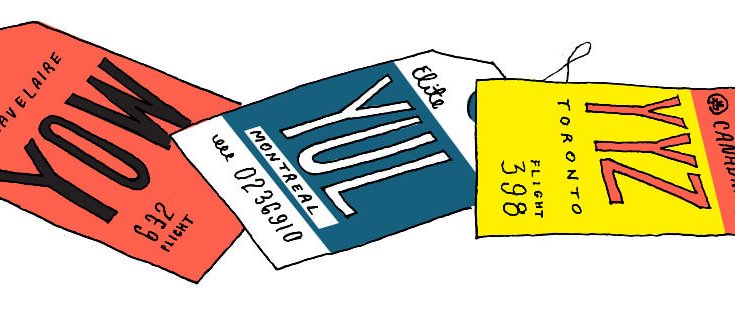Over lunch one day in retirement, Lester B. Pearson looked back on the men who had served in his cabinet and quoted Napoleon’s remark that “every French soldier carries a marshal’s baton in his knapsack.”
Pearson wasn’t comparing himself to Napoleon. He was talking about ambition. Just as Napoleon’s troops dreamed of high command, many of Pearson’s ministers saw themselves as future prime ministers. And sure enough, when Pearson retired eight of his ministers announced they would run for Liberal leader—each with his own dedicated following and distinct point of view. One of them was Pierre Trudeau.
No one ever heard Trudeau express nostalgia for the Pearson years. In fact, he seems to have hated every minute of it. He saw no reason for ministers to establish their independence by leaking dissenting opinions to favoured journalists and constituents back home. Such freedom, which Pearson had put up with, didn’t strike Trudeau as democracy in action. It seemed more like chaos.
From the early days of the Pearson era, the cabinet had distinct factions. Mitchell Sharp, the trade and commerce minister, led the right wing. Walter Gordon, Pearson’s first finance minister, was leftish, the most liberal of Liberals. His followers feared that our country would be absorbed by the United States; they promoted a nationalist agenda to “buy back Canada” from foreign corporations. Admirers of both Sharp and Gordon frequently briefed Ottawa journalists, laying bare the cabinet’s inner antagonisms.
In his autobiography, Which Reminds Me, Sharp ruefully recalls the stigma he suffered as the in-house conservative. It was rarely mentioned that Sharp grew up in a relatively poor family and had to work his way through university as a part-time student. Gordon, on the other hand, was a graduate of Toronto’s elite Upper Canada College, and moved smoothly into his family’s accountancy firm as a young man.
Pearson found himself negotiating between the two men. Sharp won most of the arguments, and Gordon’s time as finance minister ended after two years (Sharp got his job). In private life, Gordon pursued his agenda of economic nationalism, but it gradually lost its grip on public opinion.
These cabinet skirmishes involved anxiety and risk for the participants. But overall, the freewheeling system usually worked as Pearson intended. When I interviewed him in 1963, he told me that he’d observed it in action during his tenure as external affairs minister under Louis St. Laurent in the late 1940s and ’50s. St. Laurent, he said, had acted very much like a “chairman of the board,” giving his ministers enough freedom to bring their own experience and instincts to their portfolios. That included Pearson, who won the Nobel Peace Prize in 1957 for his role in helping resolve the Suez Crisis and avert a possible world war.
In those days, it was normal for cabinet ministers to treat their departments as private fiefdoms. Jimmy Gardiner, for instance, established himself as a one-man political force in a way that almost no one but Stephen Harper has accomplished in recent memory. A farmer who had twice served as premier of Saskatchewan, Gardiner held the post of agriculture minister for nearly twenty-two years, under William Lyon Mackenzie King and then St. Laurent. No one questioned his power, certainly not the Prime Minister’s Office. He was the Liberal king of the West, and he held the job until the St. Laurent government was defeated in 1957. No such politician has existed in Canada in the last six decades, and it’s hard to imagine one appearing now.
This truth is best explained by Trudeau’s inclinations, since hardened into custom. In the spring of 1968, as soon as he became prime minister, he tightened the reins of government power and let it be known that those reins all led to the PMO. In the early years, it was said (and widely believed) that his principal secretary, Marc Lalonde, held daily meetings with the executive assistants of all government ministers, so that Trudeau and his aides could know precisely what each was doing. As time went on, they increasingly did Trudeau’s bidding, which remained the case until he retired in 1984.
Since then, with one exception, no star ministers have blossomed under three long-running prime ministers, Brian Mulroney, Jean Chrétien, and Stephen Harper. That one exception is Paul Martin, Chrétien’s finance minister, whose talents attracted constant publicity and many admirers. As everyone knows, the Chrétien-Martin relationship ended in acrimony—the sort of political finale Trudeau carefully avoided.
Is there a case to be made for abandoning the quasi-presidential methods of Harper and returning to the chairman model that Pearson favoured? Pearson’s five years were surprisingly productive, considering he never had a majority and the choleric John Diefenbaker thundered at him daily from the opposition benches. Under him, the Liberals brought in national public health care, the Canada Pension Plan, and the Canadian flag, as well as the great success of Expo 67.
But it would be difficult to persuade a new prime minister to try reviving the old cabinet of divas. Today’s leaders yearn for a quiet life, and believe they are best served by obedient and respectfully silent underlings. As the example of Harper’s cabinet shows, there is no shortage of ambitious politicians willing to oblige.
This appeared in the October 2015 issue.





